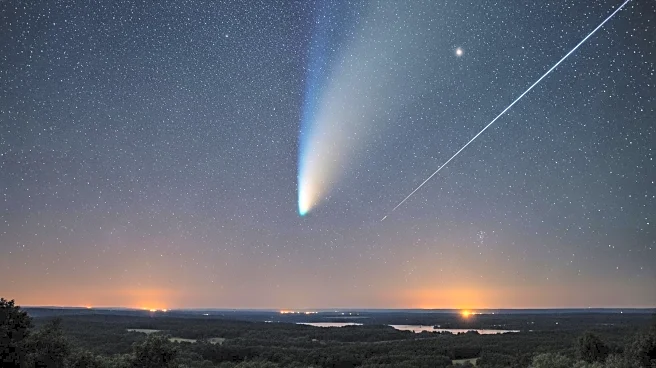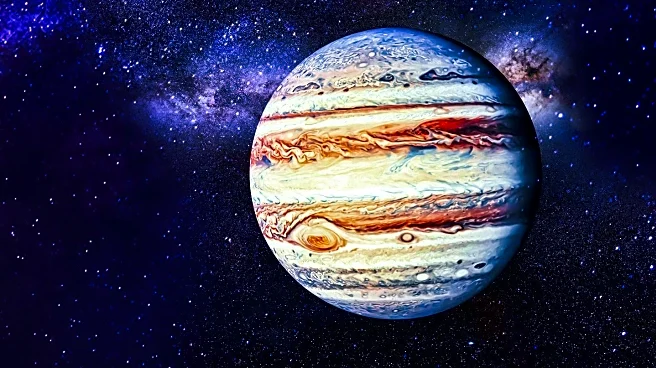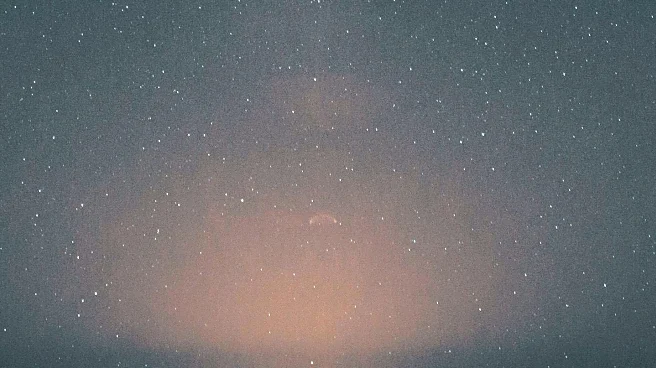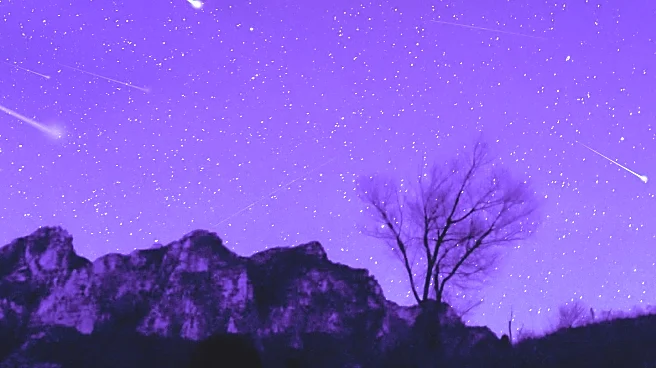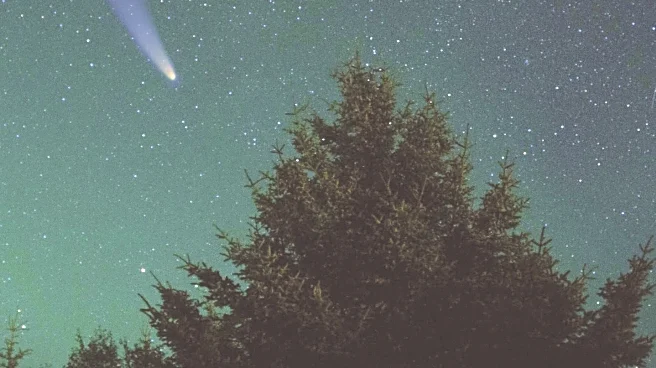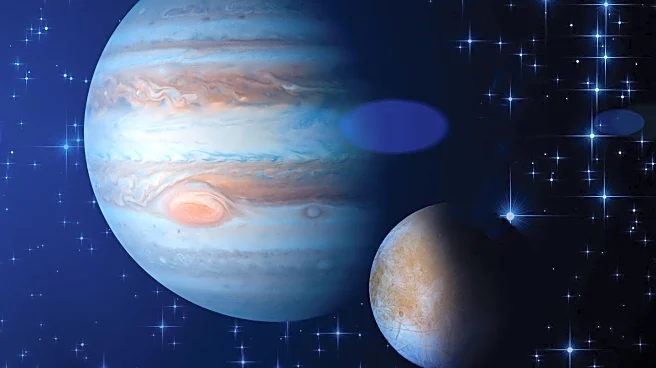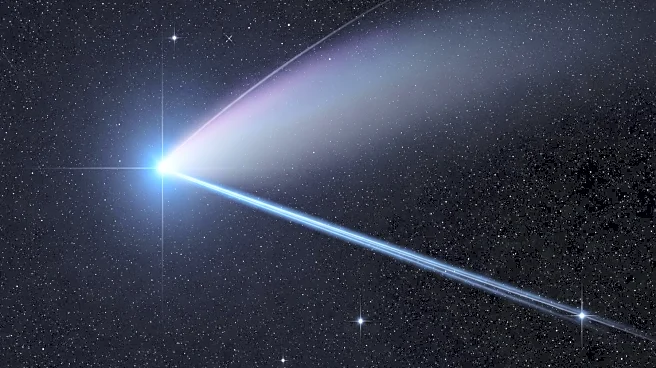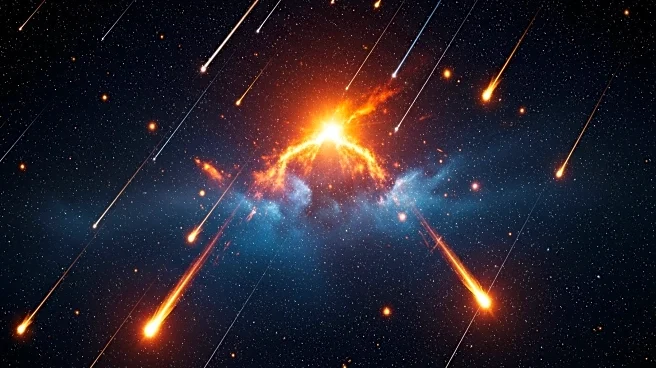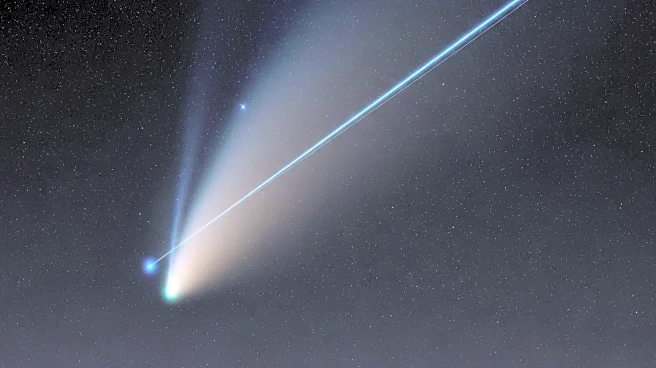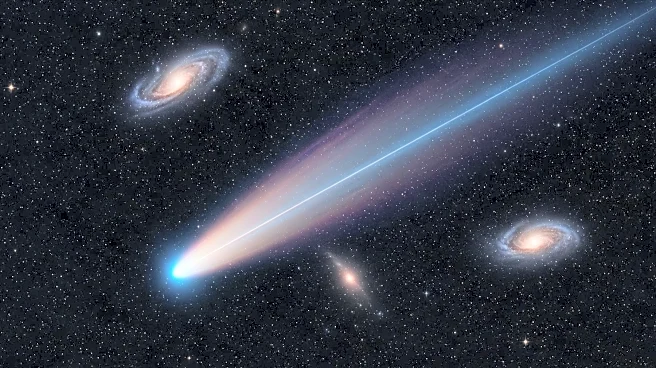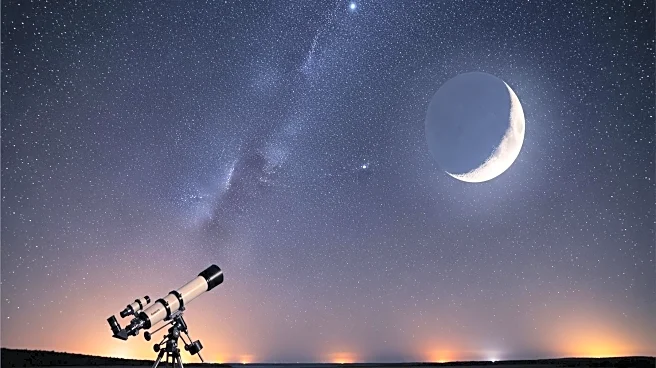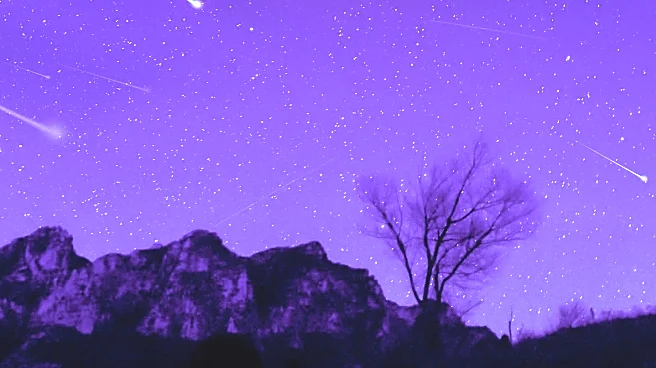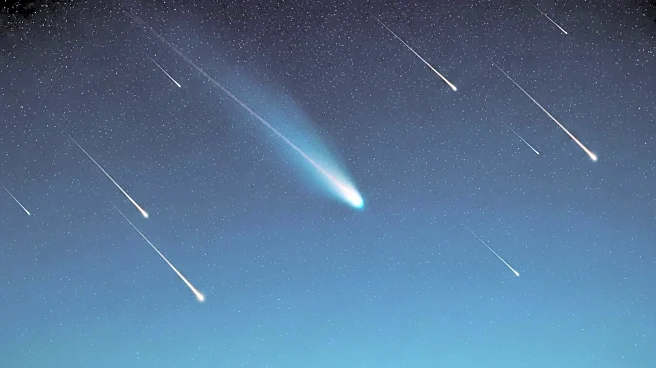What's Happening?
Comet Lemmon, discovered earlier this year, is set to make its closest approach to Earth on October 21. The comet is expected to be visible to the naked eye in late October, particularly from dark sky locations. According to meteorologist Ross Ellet,
the comet is faintly visible low on the horizon and will continue to brighten as it approaches the sun, reaching its peak brightness around October 31 or November 1. The comet's visibility is contingent on clear skies and minimal light pollution, making designated dark sky areas in Ohio ideal for viewing.
Why It's Important?
The appearance of Comet Lemmon presents a rare opportunity for astronomers and the public to observe a celestial event that won't recur for another 1,350 years. This event is significant for educational and scientific purposes, allowing astronomers to study the comet's composition and trajectory. For the public, it offers a chance to engage with astronomy and appreciate the night sky. The event also highlights the importance of preserving dark sky locations, which are crucial for astronomical observations and reducing light pollution.
What's Next?
As Comet Lemmon approaches its closest point to Earth, astronomers and enthusiasts will continue to monitor its brightness and visibility. Observatories and astronomy clubs may organize viewing events and provide guidance on how to spot the comet. The comet's trajectory and brightness will be tracked to predict its visibility in different regions. Additionally, educational programs may be developed to inform the public about comets and their significance in the solar system.
Beyond the Headlines
The visibility of Comet Lemmon underscores the importance of dark sky preservation and the impact of light pollution on astronomical observations. It also highlights the role of observatories and astronomy organizations in promoting public interest in space science. The event may inspire future generations to pursue careers in astronomy and related fields, contributing to scientific advancements and exploration.
